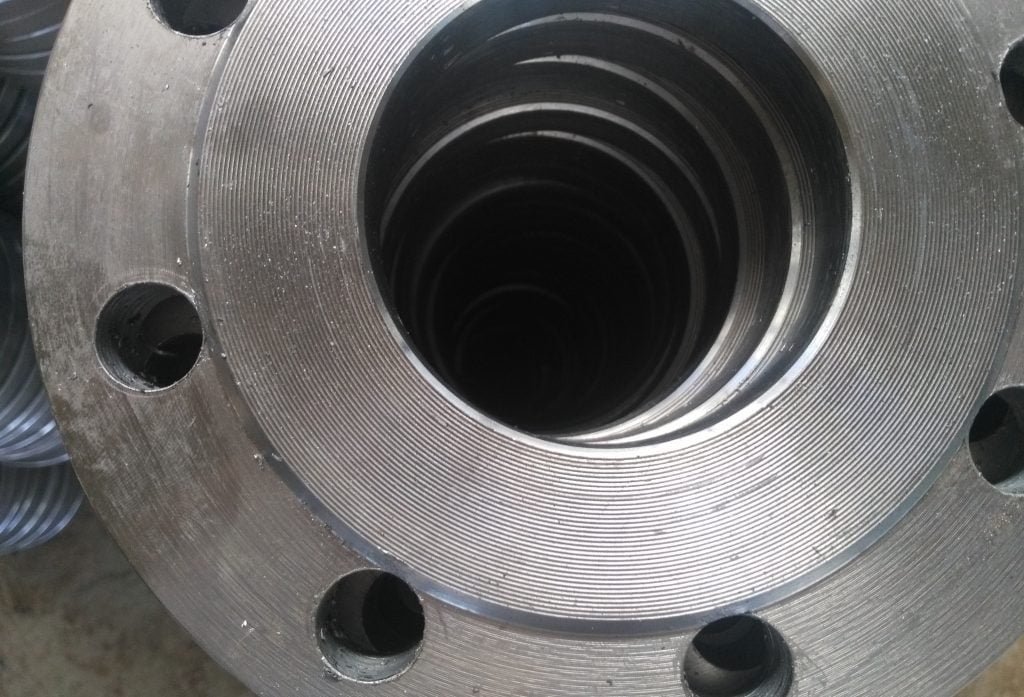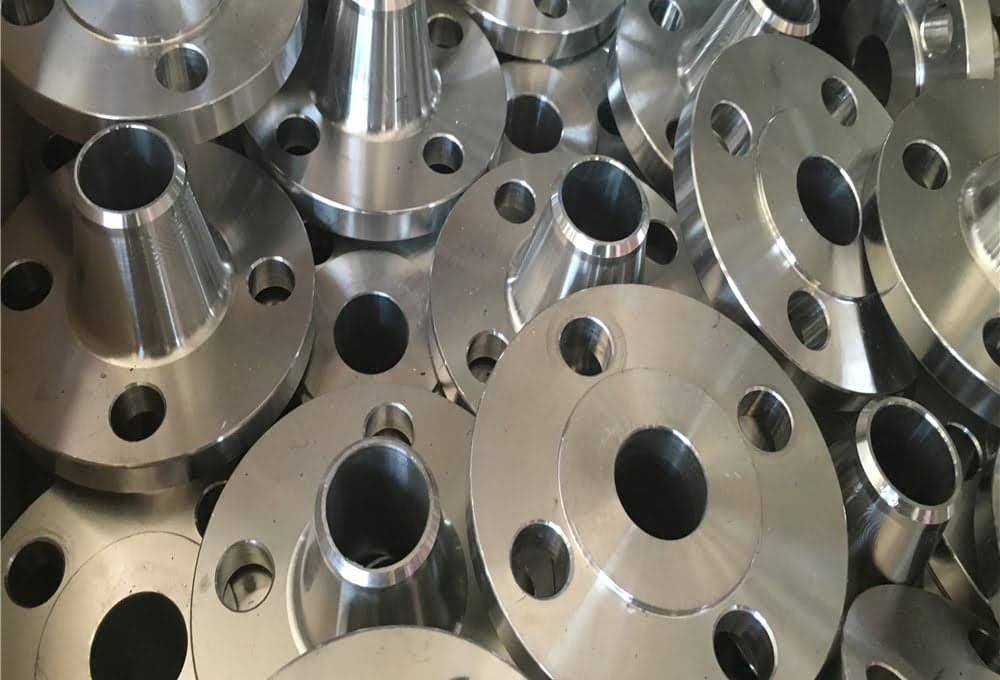What are the different standards for carbon steel flanges?
Carbon steel flanges play a critical role in piping systems, enabling the connection and sealing of pipes and equipment components. To ensure coordination and interoperability, a series of carbon steel flange standards have been established. Understanding these different standards is crucial in selecting the appropriate carbon steel flanges. This blog will introduce some common standards for carbon steel flanges, including ANSI/ASME B16.5, ANSI/ASME B16.47, MSS SP-44, API 605, and DIN. Each standard has its own characteristics and application areas, contributing to the safety and reliability of piping systems.

By delving into these standards, readers will gain a better understanding of the differences and applicability among various standards. This will aid in making informed decisions during the design and selection of carbon steel flanges, ensuring the quality and performance of piping systems. Additionally, by acquainting themselves with different standards, readers will also become aware of the possibility of other region-specific or industry-specific standards, and recognize the importance of customization and special requirements in certain circumstances.
By sharing this knowledge, the aim of this blog is to help readers comprehend the significance of carbon steel flange standards and provide guidance in selecting the appropriate standards. Adhering to the correct standards is crucial for ensuring the success and durability of systems when choosing and employing carbon steel flanges. Let’s dive into the different standards for carbon steel flanges and empower you to make informed decisions when dealing with this critical component.
I. ANSI/ASME B16.5 Standard
A. Introduction to ANSI/ASME B16.5 Standard:
- The ANSI/ASME B16.5 standard is a widely recognized American National Standard for carbon steel flanges.
- It provides guidelines and specifications for the design, dimensions, materials, and testing requirements for flanges.
- This standard ensures the compatibility and interchangeability of flanges from different manufacturers.
B. Size Range and Application Scenarios:
- The ANSI/ASME B16.5 standard covers a range of sizes from 1/2 inch to 24 inches in diameter.
- It is commonly used in various industries such as oil and gas, petrochemical, power generation, and general industrial applications.
- This standard is suitable for both high-pressure and low-pressure applications.
C. Standard Features and Covered Technical Specifications:
- ANSI/ASME B16.5 focuses on dimensional interchangeability, ensuring that flanges from different manufacturers can be interchangeable.
- It provides specifications for flange face types, including raised face (RF), flat face (FF), and ring type joint (RTJ).
- The standard covers technical aspects such as flange materials, pressure ratings, gasket types, bolting requirements, and inspection procedures.
- It also specifies the dimensions for weld neck, slip-on, socket weld, threaded, and blind flanges.
By adhering to the ANSI/ASME B16.5 standard, engineers and professionals can ensure the proper selection and installation of carbon steel flanges. The standard’s comprehensive guidelines and specifications promote consistency and reliability in the performance of flanges within different piping systems.
II. ANSI/ASME B16.47 standard
A. Introduction to ANSI/ASME B16.47 Standard:
- The ANSI/ASME B16.47 standard is another widely recognized American National Standard for carbon steel flanges.
- It provides guidelines and specifications for large-diameter steel flanges (NPS 26 to NPS 60) for use in heavy-duty applications.
- This standard focuses on flanges with pressure ratings of 75, 150, 300, 400, 600, and 900.
B. Size Range and Application Scenarios:
- ANSI/ASME B16.47 standard covers a range of larger sizes, from NPS 26 to NPS 60 (approximately 660mm to 1524mm in diameter).
- It is commonly used in industries that require large piping systems and high-pressure applications, such as oil and gas, chemical, and power generation.
C. Standard Features and Covered Technical Specifications:
- ANSI/ASME B16.47 standard includes two series:
- Series A: MSS SP44 flanges with raised face (RF) and ring type joint (RTJ) face types.
- Series B: API 605 flanges with raised face (RF) and ring type joint (RTJ) face types.
- The standard covers various technical aspects, including flange material, dimensions, tolerances, gasket types, bolting requirements, facing finishes, and testing procedures for these larger flanges.
By following the ANSI/ASME B16.47 standard, engineers and professionals can ensure the proper selection and installation of large-diameter carbon steel flanges. The standard’s guidelines provide reliability and consistency in the performance and compatibility of these flanges in heavy-duty and high-pressure applications.
III. MSS SP-44 Standard
A. Introduction to MSS SP-44 Standard:
- MSS SP-44 is a standard published by the Manufacturers Standardization Society (MSS) for steel pipeline flanges.
- It provides guidelines and specifications for carbon steel flanges with pressure ratings of ANSI Class 150, 300, 400, 600, 900, and 1500.
- This standard emphasizes the use of ring joint facing (RTJ) for improved sealing and compatibility.
B. Size Range and Application Scenarios:
- MSS SP-44 standard covers a size range from 26 inches to 60 inches (approximately 660mm to 1524mm) in diameter.
- It is commonly used in applications requiring large-diameter flanges, such as oil and gas pipelines, chemical processing plants, and refineries.
C. Standard Features and Covered Technical Specifications:
- MSS SP-44 standard specifies the dimensions, materials, tolerances, facing finishes, pressure ratings, and marking requirements for steel pipeline flanges.
- It covers flanges with ring joint facing (RTJ) and raised face (RF) face types.
- The standard includes technical specifications for flange materials, bolting requirements, gaskets, and nondestructive examination procedures.
By adhering to the MSS SP-44 standard, industry professionals ensure the proper selection and installation of carbon steel flanges in large-diameter pipeline applications. The standard’s guidelines provide uniformity, reliability, and compatibility of flanges, enhancing the overall integrity and safety of the piping systems.

IV. API 605 standard
A. Introduction to API 605 Standard:
- API 605 is a standard published by the American Petroleum Institute (API) for large-diameter steel flanges.
- It provides guidelines and specifications for carbon steel flanges with pressure ratings of Class 150, 300, 400, 600, 900, and 1500.
- This standard focuses on flanges with sizes ranging from NPS 26 to NPS 60 (approximately 660mm to 1524mm) and emphasizes the use of raised face (RF) facing.
B. Size Range and Application Scenarios:
- API 605 standard covers a size range from NPS 26 to NPS 60 (approximately 660mm to 1524mm) in diameter.
- It is commonly used in industries such as oil and gas, petrochemical, and refineries, where large-diameter flanges are required for high-pressure applications.
C. Standard Features and Covered Technical Specifications:
- API 605 standard provides specifications for dimensions, materials, tolerances, facing finishes, pressure ratings, and marking requirements for large-diameter steel flanges.
- It emphasizes the use of raised face (RF) face types for improved sealing and compatibility.
- The standard covers technical aspects such as flange materials, bolting requirements, gaskets, and nondestructive examination procedures.
By adhering to the API 605 standard, engineers and professionals can ensure the proper selection and installation of large-diameter carbon steel flanges in high-pressure applications. The standard’s guidelines promote consistency, reliability, and compatibility, ensuring the integrity and safety of the piping systems in the oil and gas industry and other related sectors.
V. DIN standard
A. Introduction to DIN Standard:
- DIN standards are technical specifications published by the Deutsches Institut für Normung (DIN), the German Institute for Standardization.
- DIN standards provide guidelines and specifications for various industries, including carbon steel flanges.
- These standards ensure compatibility, interchangeability, and safety in the application of flanges.
B. Size Range and Application Scenarios:
- DIN standards cover a wide range of sizes for carbon steel flanges, ranging from small to large diameters.
- The size range can vary depending on the specific DIN standard being followed.
- DIN standard flanges find application in industries such as oil and gas, chemical processing, power generation, and general engineering.
C. Standard Features and Covered Technical Specifications:
- DIN standards for carbon steel flanges provide specifications for dimensions, materials, pressure ratings, facing types, and other technical requirements.
- The standards cover technical aspects like flange dimensions, material composition, flange faces (such as flat faces and raised faces), gasket types and dimensions, bolting requirements, and testing procedures.
- Different DIN standards, such as DIN 2501, DIN 2633, DIN 86029, etc., may have specific requirements and classifications for different types of carbon steel flanges.
By following the DIN standards for carbon steel flanges, industry professionals can ensure compatibility, quality, and reliability in their flange applications. These standards promote uniformity and help in selecting, manufacturing, and installing flanges that meet the specific requirements of various industries and applications.

VI. Potential for Other Region or Industry Specific Standards
In addition to the aforementioned MSS SP-44, API 605, and DIN standards, there may be other region-specific or industry-specific standards for carbon steel flanges. For example:
- JIS B2220: A standard published by the Japanese Industrial Standards (JIS) for steel flanges with nominal pressures ranging from 5K to 63K.
- BS 4504: A standard published by the British Standards (BS) for steel flanges with nominal pressures ranging from PN6 to PN100.
These region-specific or industry-specific standards consider the requirements and regulations of the specific region or industry, providing tailored guidance for carbon steel flanges.
The existence of region-specific or industry-specific standards highlights the importance of customization and addressing specific requirements for carbon steel flanges. Different regions and industries may have different process standards, regulatory requirements, environmental conditions, and working pressures, which can influence the selection and performance requirements of carbon steel flanges.
Ensuring compliance with specific standards and addressing specific requirements is crucial for the suitability, safety, and reliability of carbon steel flanges in specific environments. These standards provide guidance for the design, manufacturing, installation, and testing of carbon steel flanges to meet the requirements of specific regions or industries and ensure that the flanges can meet the technical needs of specific applications. The importance of customization and specific requirements plays a vital role in ensuring the consistency and reliability of carbon steel flanges with region-specific or industry-specific standards.
VII. Conclusion
Common carbon steel flange standards include MSS SP-44, API 605, DIN standards (such as DIN 2501 and DIN 2633), as well as ANSI/ASME B16.5 and ANSI/ASME B16.47 standards. These standards provide guidelines and specifications for dimensions, materials, pressure ratings, facing types, and other technical requirements of carbon steel flanges.
It is crucial to select the appropriate standard when choosing carbon steel flanges. Different industries and regions may have specific requirements and regulations that need to be followed. Adhering to the correct standard ensures compatibility, quality, and reliability in flange applications. It also helps in ensuring the flanges meet the specific requirements of the industry, environment, and application, promoting safety and performance.
As industries continue to advance and evolve, it is anticipated that there will be further development of standards for carbon steel flanges. These developments may include the incorporation of advanced technologies, the use of improved materials, and the targeting of specific industry needs. It is important for industry professionals to stay updated on the latest developments and standards to ensure the use of the most appropriate and up-to-date carbon steel flange standards.
In conclusion, the proper selection and adherence to suitable carbon steel flange standards, such as MSS SP-44, API 605, DIN standards, ANSI/ASME B16.5, and ANSI/ASME B16.47, are crucial for ensuring compatibility, safety, and reliability in flange applications. Looking ahead, the continued development and evolution of standards will contribute to further advancements in the performance and application of carbon steel flanges.
Author: Lewis Liu
Hello, my name is Lewis Liu, and I’m a professional sales engineer with over a decade of expertise in the flange fittings sector.
I am quite informed about flange selection, installation, and maintenance. I am passionate about providing customers with the greatest solutions for keeping their pipeline systems running smoothly, safely, and dependably.
If you have any queries or concerns concerning flange fittings for your pipelines, whether they are about selection, material choice, specification requirements, or anything else, please contact me at any time. I am dedicated to providing expert advice and assistance to help you make educated decisions and reach your objectives.

